
Címke: Hungary
-
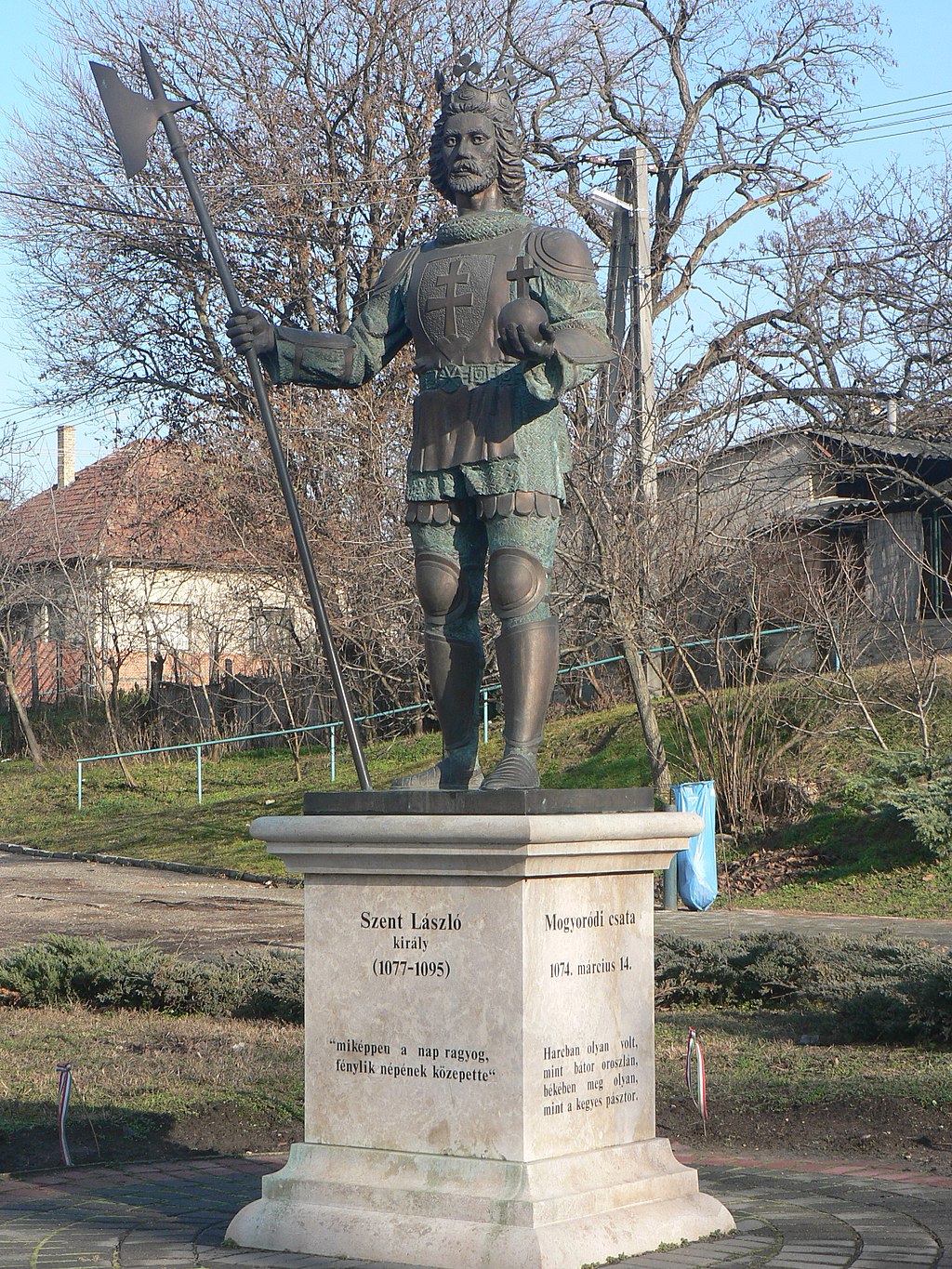
Bronze statue of Saint Ladislaus by Józsa Lajos, unveiled in 2001 on Mogyoród, commemorates the princes victory at the 1074 Battle of Mogyoród.
Saint Ladislaus – Oradea (Nagyvárad)
Saint Ladislaus – Oradea (Nagyvárad) Fact of the Hungarian figure „St. Stephen and others – First christian saints in Hungarian Kingdom”…
-
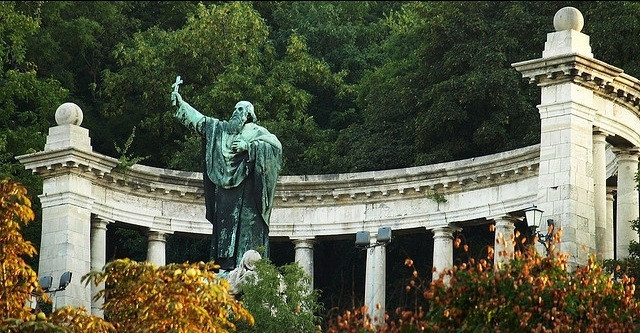
Erected in 1904, some 40 m up Budapest’s Gellért Hill, the memorial—centred on Gyula Jankovits’s 7 m-tall bronze of Saint Gerard lifting a cross, flanked by Aladár Gárdos’s stone figure of the recently converted warrior and framed by Imre Francsek’s semicircular arcade and waterfall—marks the traditional spot of the bishop’s martyrdom during the 1046 Vata pagan revolt.
Great pagan rebellion in 1046 – Gellért-Hill, Budapest
Great pagan rebellion in 1046 – Gellért-Hill, Budapest Fact of the Hungarian figure „St. Stephen and others – First christian saints…
-
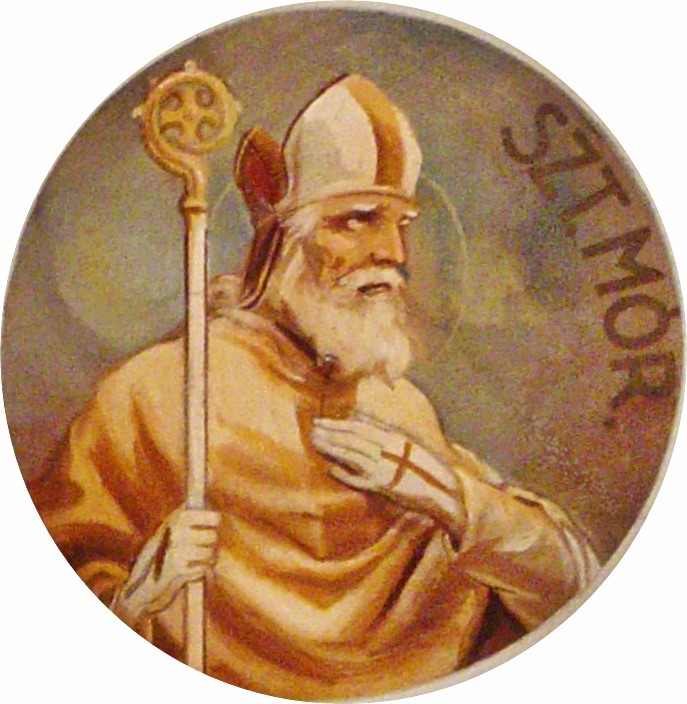
Ceiling fresco from the Pálos-Lyceum Church in Pécs, Hungary—one of the richly painted panels that form the church’s Baroque vault decoration.
Saint Maurus, the writer of the legend – Pécs
Saint Maurus, the writer of the legend – Pécs Fact of the Hungarian figure „St. Stephen and others – First christian…
-
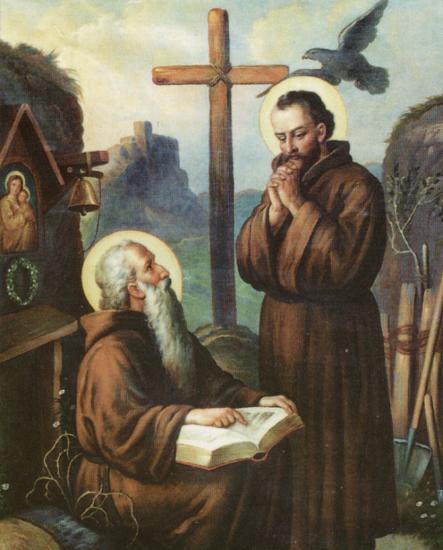
Devotional card showing Saint Andrew Zoerard (also known as Svorad or Świerad) alongside his disciple and fellow hermit-martyr, Saint Benedict (d. c. 1037).
Saint Andrew-Zorard and Benedict – Zobor
Saint Andrew-Zorard and Benedict – Zobor Fact of the Hungarian figure „St. Stephen and others – First christian saints in Hungarian…
-
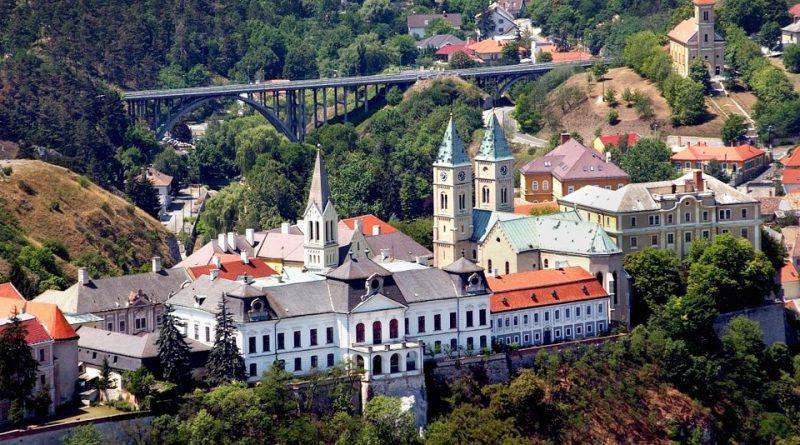
The designation of Veszprém—originating from Hungarian toponymy and derived from the West Slavic personal name Bezprem, meaning “stubborn ” or ” headstrong,” and traditionally associated with the Polish prince Bezprym, the son of King Bolesław I and Princess Judith of the Árpád dynasty—persists within the town, whose center is dominated by the partially dismantled Castle of Veszprém, a historic fortification esteemed today for its exceptional cultural and heritage significance.
First bishopric and the centre of Queens – Veszprém
First bishopric and the centre of Queens – Veszprém Fact of the Hungarian figure „St. Stephen and others – First christian…
-
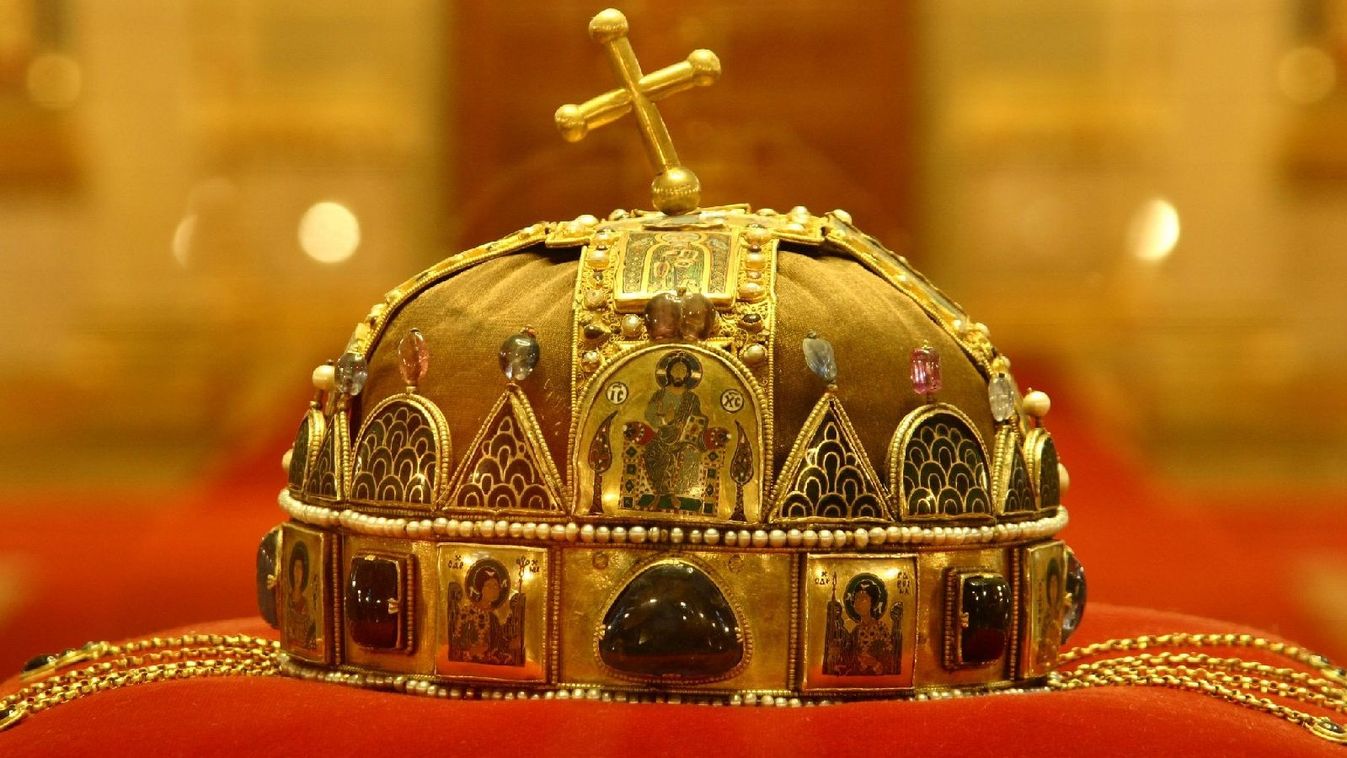
Displayed in an earthquake-proof, nitrogen-filled vitrine beneath the dome of Hungary’s Parliament, the Holy Crown is illuminated solely by artificial light, revealing an upper cruciform of darker, purer gold composed of four 51 mm-wide bands, surmounting a lower circlet of lighter, silver-alloyed gold, whose cloisonné enamels feature Greek inscriptions—all lavishly embellished with pearls and gemstones.
Legend of the Holy Crown – Budapest, Parliament
Legend of the Holy Crown (Budapest, Parliament) Fact of the Hungarian figure „St. Stephen and others – First christian saints in…
-
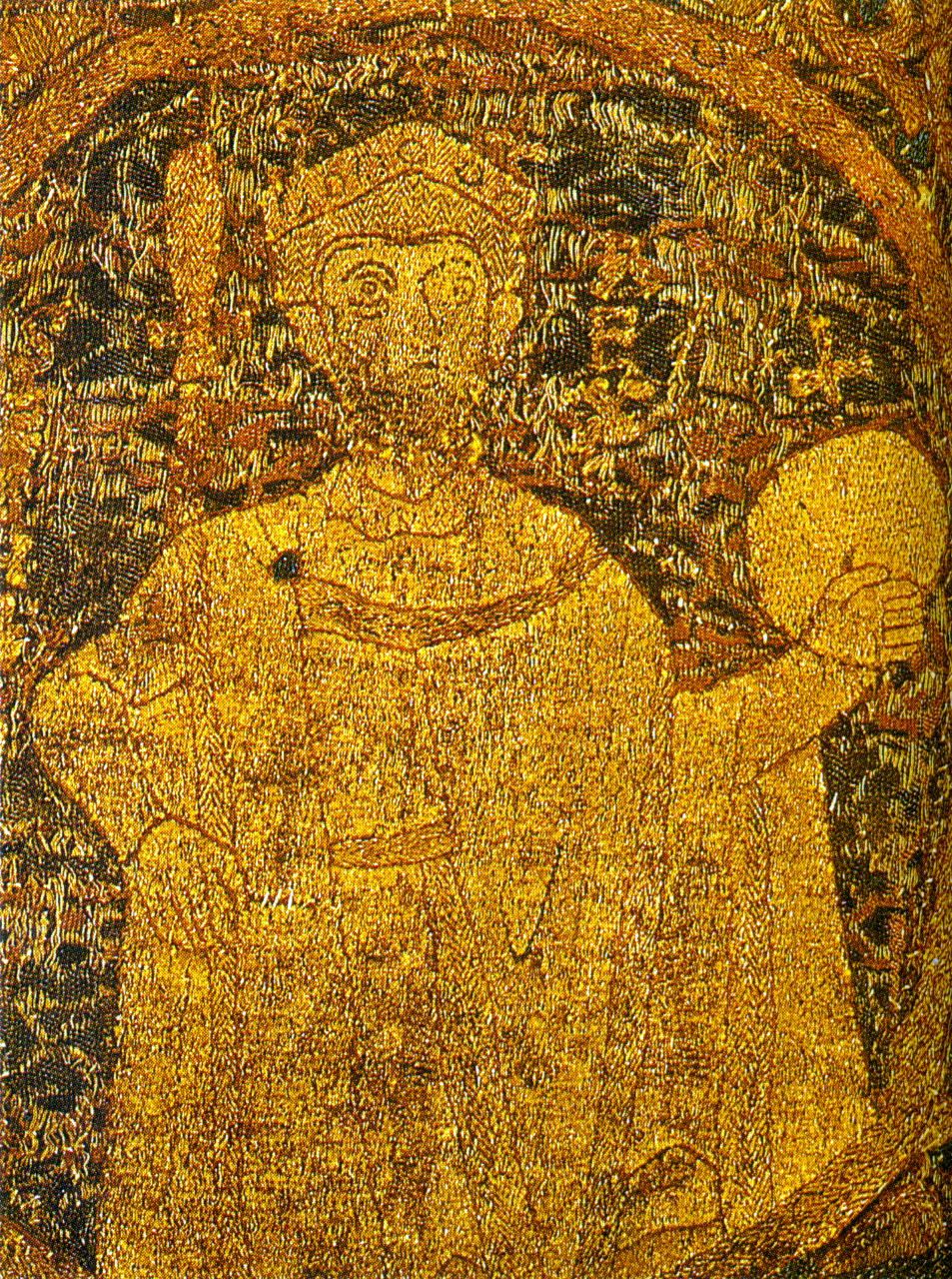
The only surviving contemporary image of St. Stephen is woven into the dense gold embroidery of the semicircular, bluish-purple Hungarian Coronation Mantle—once a chasuble donated by Queen Gisela to the Székesfehérvár basilica, later adopted as the traditional coronation cloak, and now safeguarded in the Hungarian National Museum.
Saint Stephen – Esztergom
Saint Stephen – Esztergom Fact of the Hungarian figure „St. Stephen and others – First christian saints in Hungarian Kingdom” Part…
-
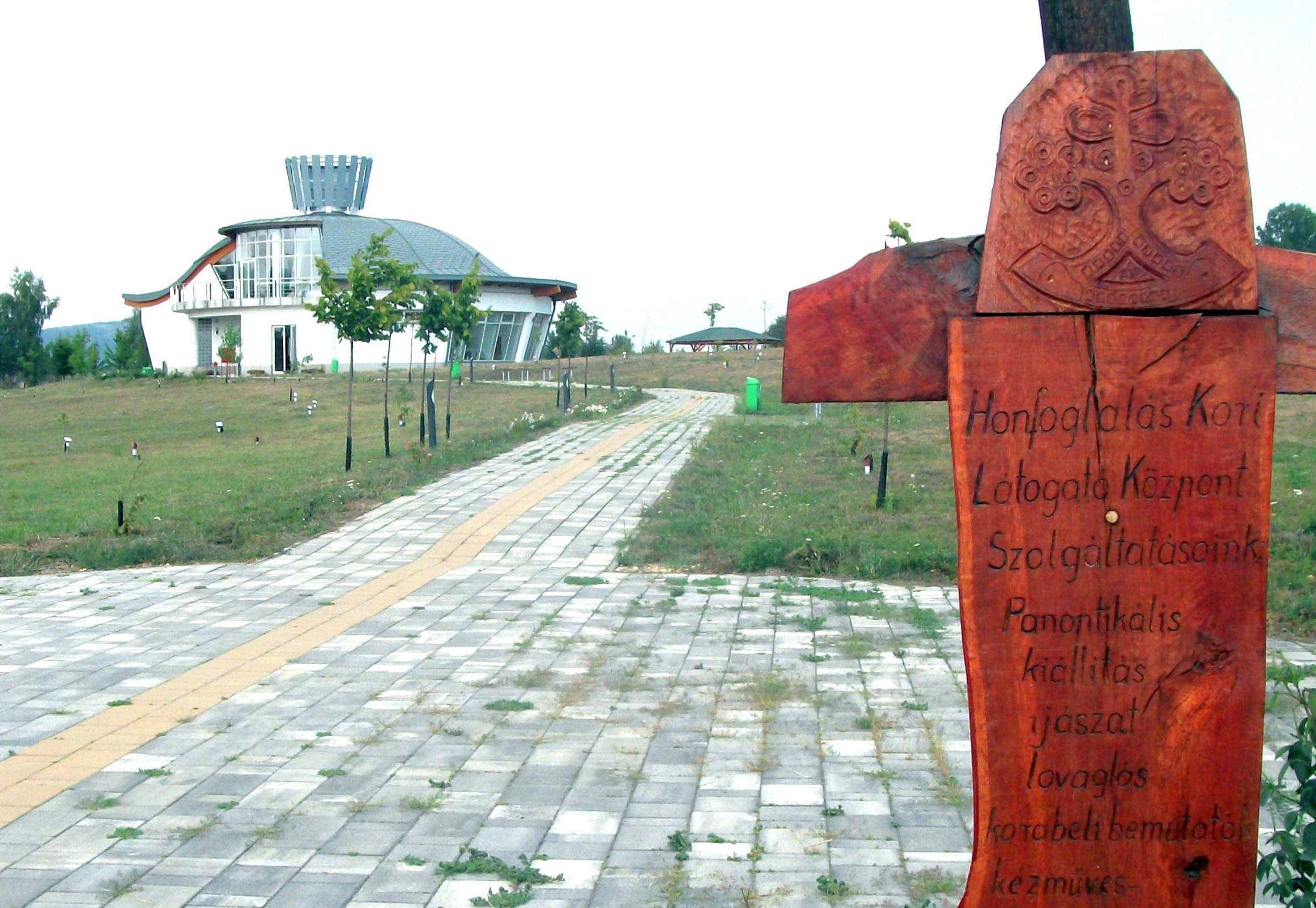
The Karos Visitor Centre of the Age of Land-taking (Honfoglalás Kori Látogatóközpont) in Karos, Hungary, offers an immersive exploration of the early Hungarian conquest period. Opened near the archaeological sites where 10th-century princely cemeteries were excavated, the centre combines exhibition spaces with experiential programs such as archery, horseback riding, and historical craft demonstrations. Architecturally inspired by ancient Hungarian motifs, it serves as both a memorial and an educational space, reinforcing the cultural memory of the Árpád dynasty’s early power base in the Upper Tisza region.
First centre of the Arpads – Upper-Tisza Region
First centre of the Arpads – Upper-Tisza Region (Karos Visitor Centre of the Age of Land-taking) Fact of the Hungarian…
-
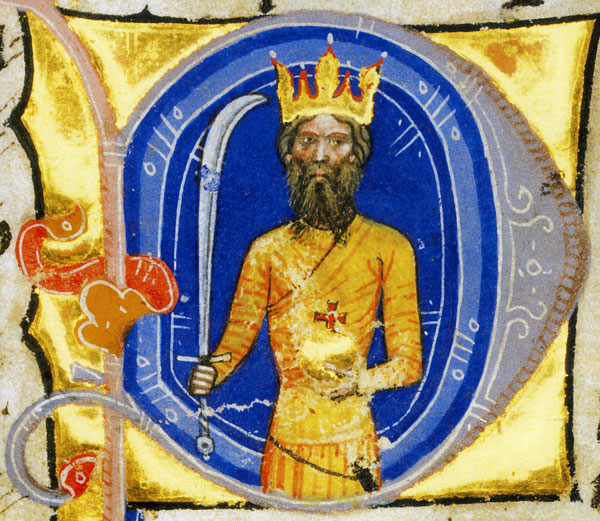
Attila the Hun is depicted in the 14th-century Illuminated Chronicle (Chronicon Pictum), wearing a royal crown and holding a sword and orb as symbols of his power and authority. In medieval Hungarian historiography, especially during the 13th and 14th centuries, Attila was reimagined as a predecessor of the Hungarian kings and an integral part of Hungary’s national mythology. His image in the Illuminated Chronicle reflects this tradition, blending historical memory and legend to emphasize Hungary’s ancient roots and royal continuity.
Mythical centre of Attila – Óbuda (Sicambria)
Mythical centre of Attila – Óbuda (Sicambria) Fact of the Hungarian figure „Myth of the Hungarian land-taking – Ópusztaszer” Part of…
-
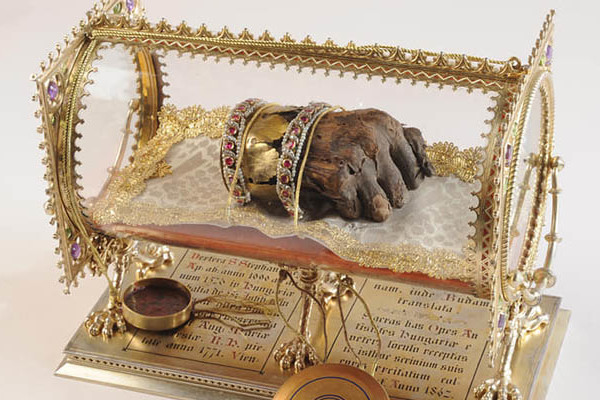
The Holy Right Hand displayed in its neo-Gothic reliquary of silver and cut glass, crafted in Vienna in 1862 to the designs of József Lippert, chief architect to the Primate of Hungary.
Legend of the Holy Right Hand – Sâniob (Szentjobb)
Legend of the Holy Right Hand – Sâniob (Szentjobb) Fact of the Hungarian figure „St. Stephen and others – First christian…
